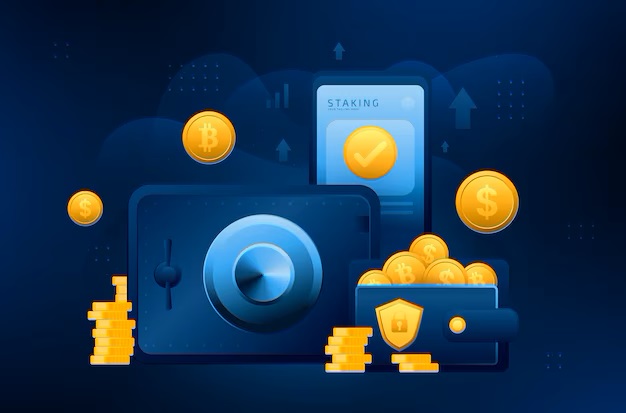Integrating innovative digital frameworks into ownership structures offers significant advancements in operational performance and clarity. By creating unique digital representations of tangible and intangible holdings, entities can experience streamlined transactions and reduced friction in ownership transfers.
Data shows that platforms utilizing these digital methodologies can cut settlement times drastically, from weeks to mere minutes. This swift process not only benefits participants but also contributes to an ecosystem where trust and verification occur transparently. The ability to track changes in ownership in real time significantly diminishes the risks associated with fraud or misrepresentation.
Moreover, the granularity of ownership made possible through these digital formats allows for fractionalized investment opportunities, broadening access for a wider range of investors. Such inclusivity can lead to increased participation in various sectors while also fostering a diverse range of funding sources.
As regulatory bodies begin to recognize and adapt to these emerging approaches, compliance becomes more straightforward, paving the way for sustainable growth. Entities that adopt these strategies now position themselves favorably for the future, reaping the benefits of enhanced operational dynamics and open accountability.
How Tokenization Reduces Transaction Costs in Asset Trading
Implementing blockchain technology significantly cuts transaction fees associated with trading by minimizing intermediaries. Traditional practices often involve brokers and clearinghouses, each charging separate fees. By utilizing smart contracts, parties can transact directly, leading to substantial savings.
Another key factor is the reduced need for paperwork and manual processing. Automating these functions not only expedites transactions but also lowers administrative costs. Streamlined verification processes further eliminate delays, improving overall cost-effectiveness.
Here’s a comparison of transaction costs between conventional methods and blockchain solutions:
| Method | Average Transaction Cost (%) | Time Required |
|---|---|---|
| Traditional (Brokerage) | 1.5% – 3% | 3-5 days |
| Blockchain Approach | 0.1% – 0.5% | Minutes |
Increased security on the blockchain lowers the risk of fraud, resulting in fewer disputes and legal expenses. Additionally, transparency in transactions enhances trust, which can lead to lower liability insurance costs for traders.
Adopting decentralized platforms allows users to access global markets without geographical constraints, expanding liquidity and reducing price discrepancies. This accessibility encourages competitive pricing, further diminishing transaction costs for all participants.
The Role of Blockchain in Ensuring Asset Authenticity
Employing blockchain technology significantly bolsters verification processes for ownership and legitimacy. Each entry on a decentralized ledger is cryptographically secured, creating an immutable record of an item’s provenance. This feature eliminates disputes regarding origins, making it impossible to alter historical transaction data retrospectively.
Verification Mechanisms
Incorporating smart contracts automates verification, allowing for predefined conditions to be met before confirming transactions. For example, an item can be flagged as legitimate only when certain criteria, such as previous ownership or certification documents, are verified. This automation minimizes human error and reduces transactional friction.
Visibility and Traceability
Blockchain offers unparalleled traceability. Every transaction is publicly accessible, enabling stakeholders to audit and track the entire lifecycle of an item. This transparency fosters trust among buyers and sellers, as parties can independently verify authenticity claims without relying on third-party intermediaries.
Creating a unique digital fingerprint for each item stored on a blockchain enhances security. This fingerprint, or hash, can be used to quickly compare against future claims of authenticity, ensuring that counterfeit items can be easily identified. For businesses, implementing this technology can lead to increased consumer confidence and reduced fraud-related losses.
Impact of Tokenized Assets on Liquidity in Financial Markets
Implementing blockchain technology to represent ownership stakes over traditional financial instruments can significantly increase transaction speed. Transactions that typically take days can be completed in hours or even minutes, allowing for a more agile trading environment.
By fractionalizing high-value properties, individuals gain access to invest in them through smaller amounts, thus broadening the investor base. The potential to buy and sell these fractions on digital exchanges enhances participation and raises the overall supply of tradable items, subsequently bolstering trade volume.
Using smart contracts facilitates automated execution of trades once certain conditions are met. This technology reduces counterparty risk and can lead to a higher frequency of successful transactions, promoting liquidity even further.
Data transparency is increased through the immutable record-keeping of transactions, attracting institutional investors who often shy away from opaque markets. Enhanced visibility into trade histories fosters trust and can lead to more capital flowing into these digital representations.
A reduction in administrative costs associated with manual processes and intermediaries also contributes to lowering barriers for entry. This diminishes non-competitive pricing and creates a more dynamic trading atmosphere.
Finally, cross-border transactions become more feasible due to the borderless nature of many blockchain networks. This increases the potential for diverse investors to enter a wide range of markets, amplifying liquidity as assets are not confined to geographical limitations.
Regulatory Considerations for Asset Tokenization
Entities must adhere to relevant legal frameworks while introducing blockchain-based securities. Regulatory compliance involves understanding the jurisdictional rules governing digital representations of value, including security laws, anti-money laundering (AML) requirements, and know your customer (KYC) regulations.
Understanding Security Classification
Clarification of whether the issued tokens qualify as securities is paramount. The Howey Test in the United States provides guidelines on this matter, wherein offerings meeting the criteria of investment of money in a common enterprise with a reasonable expectation of profits influenced by others fall under securities regulation. International jurisdictions may have varying definitions and thresholds, necessitating localized legal consultation.
Licensing and Compliance Obligations
Many jurisdictions impose licensing requirements on businesses operating in this space. Legal entities must assess whether they need to register with financial authorities or obtain specific licenses to deal in such instruments. Regular audits and reporting obligations may also apply. Engaging with legal experts specializing in financial regulation enhances compliance efforts and minimizes potential legal exposure.
Case Studies of Successful Tokenized Asset Platforms
Real-world examples provide valuable insights into the implementation of blockchain-based ownership systems. A prominent instance is RealT, a platform allowing fractional ownership of real estate. Each property is represented by tokens, enabling investors to acquire shares easily. With transparent rental income distribution recorded on the blockchain, this approach minimizes trust issues and enhances user confidence.
Figure Technologies
Figure Technologies exemplifies another successful application by integrating financial products into a decentralized architecture. Their approach to home equity loans utilizes blockchain to secure and expedite transactions. By employing token representations of loans, Figure significantly reduces operational costs and eliminates intermediaries, providing faster approvals and disbursements for homeowners seeking liquidity.
Curate Network
The Curate Network operates in the art market, allowing artists to tokenize their works. This platform permits seamless trading of digital art pieces, ensuring authenticity through blockchain verification. Such advancements not only protect creators’ rights but also provide buyers with a clear provenance history, encouraging confidence in their investments.
By studying these implementations, organizations can identify best practices, such as utilizing robust smart contracts, ensuring regulatory compliance, and fostering community engagement to enhance adoption rates. These case studies illustrate the potential for innovative ownership structures in various sectors.
Future Trends in Asset Tokenization and Market Dynamics
Integrating blockchain technology with financial systems will lead to growing demand for fractional ownership models. By allowing small investors access to otherwise illiquid properties, these models can catalyze increased transaction volumes.
Decentralized Finance (DeFi) Integration
The convergence of traditional finance with decentralized platforms is expected to gain momentum. Institutions should consider partnerships with DeFi projects to explore innovative lending protocols and investment strategies:
- Establish liquidity pools to facilitate quicker transactions.
- Implement smart contracts for automated compliance and risk management.
- Focus on cross-chain compatibility to broaden accessibility.
Regulatory Clarity and Standardization
Anticipation of clearer regulatory frameworks will shape future developments. Organizations must prepare for compliance shifts by engaging with regulators and participating in industry discussions:
- Develop policies to align with upcoming regulations.
- Create transparency in operations to build investor confidence.
- Stay informed on global regulatory initiatives to adapt business models accordingly.
As educational initiatives proliferate, a more informed investor base will emerge, further driving innovative practices in the financial sector.
Q&A: Tokenizing Assets Could Boost Market Efficiency
What is asset tokenization and how does tokenization create a digital asset by representing a given asset on a blockchain network?
Asset tokenization is the process of converting a high-value asset such as real estate or art into digital tokens on a blockchain, allowing ownership rights of an asset to be split into fractions and traded just like any other digital asset.
How can tokenization enhance liquidity for traditionally illiquid assets like real estate assets or tokenized bonds?
Tokenization can enhance liquidity by issuing tokens on a blockchain that represent fractional ownership, letting investors buy and sell small portions of an illiquid asset class rather than the whole underlying asset.
What benefits of tokenization attract market participants seeking transparency and efficiency across asset classes?
Because tokens on a blockchain provide immutable transaction records, asset tokenization can enhance transparency and efficiency, reducing settlement times and operational costs compared with traditional asset transfers.
Why do asset tokenization projects focus on assets like real estate and tokenized carbon credits when exploring new tokenization use cases?
Assets like real estate and tokenized carbon credits carry clear real-world value yet suffer from limited secondary markets; tokenization offers fractional ownership of assets and easier trading of tokenized real-world assets.
How does the decentralized nature of blockchain help establish a robust market and build trust in tokenized assets?
The decentralized nature of blockchain distributes records across nodes, ensuring security and integrity of tokenized assets and fostering investor trust in tokenized assets without a single point of failure.
What role can asset management firms play in the adoption of tokenization of bonds and other financial assets?
Asset management firms can originate tokenized financial instruments, oversee compliance, and provide custody, accelerating adoption of tokenized financial products within the broader asset tokenization market.
How might tokenization of assets unlock value in intangible assets such as in-game assets or intellectual property?
Tokenization of intangible assets lets creators issue digital tokens that grant verifiable ownership and enable secondary trading, turning formerly illiquid asset classes into liquid markets.
Why is asset tokenization seen as one path to enhancing market efficiency and value across various asset classes like energy credits and tokenized real estate?
Tokenization allows near-instant settlement, wider investor access, and reduced friction, so asset tokenization can potentially lower capital costs and expand the total tokenized market capitalization.
What challenges remain before the full potential of the tokenized asset landscape is realized and adoption of tokenized assets is widespread?
Tokenization is still maturing, with regulatory clarity, interoperability, and custody standards needed to ensure integrity of tokenized assets and investor protection across different asset classes.
How do tokenized asset markets support fractional ownership of assets, and why might this benefit retail investors looking to diversify?
By breaking large physical assets into smaller digital units, tokenized asset markets let retail investors buy low-cost fractions, enabling a range of assets such as tokenized real estate to fit diversified portfolios.






